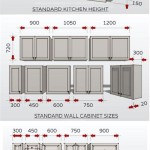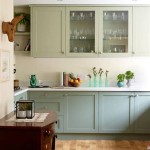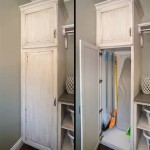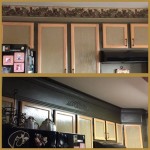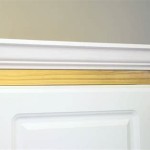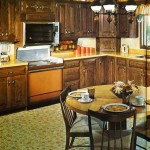Kitchen Cabinets: An In-Depth Look at Steel Construction
Kitchen cabinets are a fundamental element of any kitchen space, contributing significantly to both functionality and aesthetics. The material used in their construction profoundly impacts their durability, maintenance, and overall design. While wood, laminate, and other materials are commonly employed, steel as a cabinet material offers a unique set of advantages that make it a compelling choice for homeowners and designers alike. This article will explore the key characteristics of steel kitchen cabinets, highlighting their benefits, considerations, and various applications.
The rising popularity of steel kitchen cabinets can be attributed to several factors, including their sleek, modern appearance, their exceptional resistance to moisture and pests, and their long-term durability. As design trends shift towards minimalist and industrial aesthetics, steel cabinets seamlessly integrate into these styles. Furthermore, the inherent properties of steel make it a hygienic and practical choice for food preparation environments, where cleanliness and durability are paramount.
Steel cabinets are typically constructed from cold-rolled steel sheets, which are then precisely cut, formed, and welded together. This process allows for the creation of cabinets with clean lines and tight tolerances. The steel surface is then treated with a variety of finishes to enhance its appearance and protect it from corrosion. Powder coating is a common finishing method, providing a durable, scratch-resistant surface in a wide range of colors and textures. Stainless steel, another popular option, offers a naturally corrosion-resistant surface with a classic, industrial look.
Durability and Longevity of Steel Cabinets
One of the most significant advantages of steel kitchen cabinets is their exceptional durability. Unlike wood cabinets, steel is not susceptible to warping, cracking, or swelling due to changes in humidity. This makes them particularly well-suited for kitchens in humid climates or those prone to moisture exposure. Steel is also resistant to pests such as termites and rodents, which can cause significant damage to wood cabinets over time. The inherent strength of steel allows cabinets to withstand heavy loads and resist dents and scratches, ensuring they maintain their appearance and functionality for many years.
The longevity of steel cabinets translates to long-term cost savings. While the initial investment may be higher compared to some other cabinet materials, the reduced need for repairs and replacements over time makes steel a cost-effective choice in the long run. The durability of the finish also contributes to their longevity. Powder-coated steel, for example, is highly resistant to chipping, fading, and staining, requiring minimal maintenance to keep it looking new. This resilience to wear and tear allows steel cabinets to withstand the rigors of daily use in a busy kitchen environment.
Beyond the structural integrity of the steel itself, the construction methods used in manufacturing steel cabinets also contribute to their durability. Welding provides strong, permanent joints that resist separation and failure. Reinforcements can be added to critical areas, such as corners and shelves, to further enhance their strength and stability. The use of high-quality hardware, such as hinges and drawer slides, also ensures smooth and reliable operation for years to come. The combination of robust materials and meticulous construction practices makes steel cabinets a durable and long-lasting investment.
Hygienic Properties and Ease of Maintenance
In a kitchen environment, hygiene is of utmost importance. Steel cabinets offer a superior level of hygiene compared to wood cabinets due to their non-porous surface. This prevents the absorption of liquids, food particles, and bacteria, making them easy to clean and sanitize. Steel is also naturally resistant to mold and mildew growth, which can be a concern in humid kitchen environments. The smooth, non-porous surface minimizes the risk of harboring allergens and contaminants, contributing to a healthier kitchen environment.
Maintaining steel kitchen cabinets is a simple and straightforward process. Regular cleaning with a mild soap and water solution is typically sufficient to remove dirt, grease, and spills. For stubborn stains, a non-abrasive cleaner can be used without damaging the finish. Stainless steel cabinets may require occasional polishing to maintain their shine and prevent fingerprints from becoming visible. However, even this maintenance is minimal compared to the upkeep required for wood cabinets, which may need to be refinished or resealed periodically.
The ease of maintenance of steel cabinets translates to significant time savings for homeowners. Unlike wood cabinets, which may require specialized cleaning products and techniques, steel cabinets can be easily cleaned with common household supplies. Their resistance to stains and spills also means that messes can be quickly wiped away without the risk of permanent damage. This makes steel cabinets a practical choice for busy households where time is a valuable commodity. The ease of cleaning and maintenance also contributes to their long-term appeal, ensuring they maintain their pristine appearance for many years.
Design Flexibility and Aesthetic Appeal of Steel Cabinets
While often associated with modern and industrial design styles, steel kitchen cabinets offer surprising design flexibility. The ability to powder coat steel in a wide range of colors and textures allows for the creation of cabinets that complement any kitchen decor. From sleek, minimalist designs to more traditional styles with decorative hardware, steel cabinets can be customized to suit individual preferences. The clean lines and smooth surfaces of steel cabinets create a visually appealing and uncluttered look that enhances the overall aesthetic of the kitchen.
The versatility of steel extends beyond color and texture. Steel cabinets can be manufactured in a variety of sizes and configurations, allowing for efficient use of space and customized storage solutions. Open shelving, drawers with adjustable dividers, and pull-out organizers can be easily incorporated into steel cabinet designs to maximize functionality. The precision manufacturing process allows for tight tolerances and seamless integration of appliances, creating a cohesive and streamlined kitchen design.
The incorporation of steel cabinets into a kitchen design can also create a sense of spaciousness and lightness. The reflective properties of steel can help to brighten the room and create a more open and airy feel. In contrast to dark wood cabinets, which can make a kitchen feel cramped and enclosed, steel cabinets can contribute to a more inviting and welcoming atmosphere. The sleek, modern aesthetic of steel cabinets can also add a touch of sophistication and elegance to the kitchen space. The combination of design flexibility and aesthetic appeal makes steel cabinets a versatile choice for homeowners looking to create a unique and stylish kitchen.
Beyond the aforementioned benefits, steel cabinets are also increasingly recognized for their environmentally friendly properties. Steel is a highly recyclable material, and many manufacturers use recycled steel in their cabinet production. This reduces the demand for virgin materials and minimizes the environmental impact of the manufacturing process. The long lifespan of steel cabinets also contributes to their sustainability, as they require less frequent replacement compared to other cabinet materials. By choosing steel cabinets, homeowners can make a conscious decision to support sustainable practices and reduce their environmental footprint.
In conclusion, steel kitchen cabinets offer a compelling combination of durability, hygiene, design flexibility, and sustainability. Their resistance to moisture, pests, and wear and tear makes them a long-lasting and cost-effective choice. Their non-porous surface ensures a hygienic environment for food preparation, and their wide range of finishing options allows for seamless integration into any kitchen design. As homeowners and designers increasingly prioritize durability, functionality, and sustainability, steel cabinets are poised to become an even more popular choice in the modern kitchen.

A Guide To Installing Metal Kitchen Cabinets Designcafe

Stainless Steel Kitchen Cabinets Pictures Ideas

Steel Kitchen Cabinets 4 Places To Buy Them Made New Today Retro Renovation

Metal Cabinet Doors In Your Kitchen Reno Stoll Industries Made The Usa

Kitchen Cabinetry Industrial Metal Furniture The Hardy Steel Counter Tops Decorative X Brace And Rivets

Newage S Stainless Steel 3 Piece 92 In W X 36 5 H 24 D Outdoor Kitchen Cabinet Set Without Counter Tops 66023 The Home Depot

Modern Home Metal Ss Kitchen Cabinets Readymade Outdoor Water Proof 304 Stainless Steel Cabinet China Design Made In Com

Custom Stainless Steel Ss Kitchen Cabinets Manufacturer In China Baineng

16 Metal Kitchen Cabinet Ideas Home Design Lover Aluminum Cabinets Aluminium

Full Solution Of Stainless Steel Kitchen Cabinets For Villa House Apartment
Related Posts

